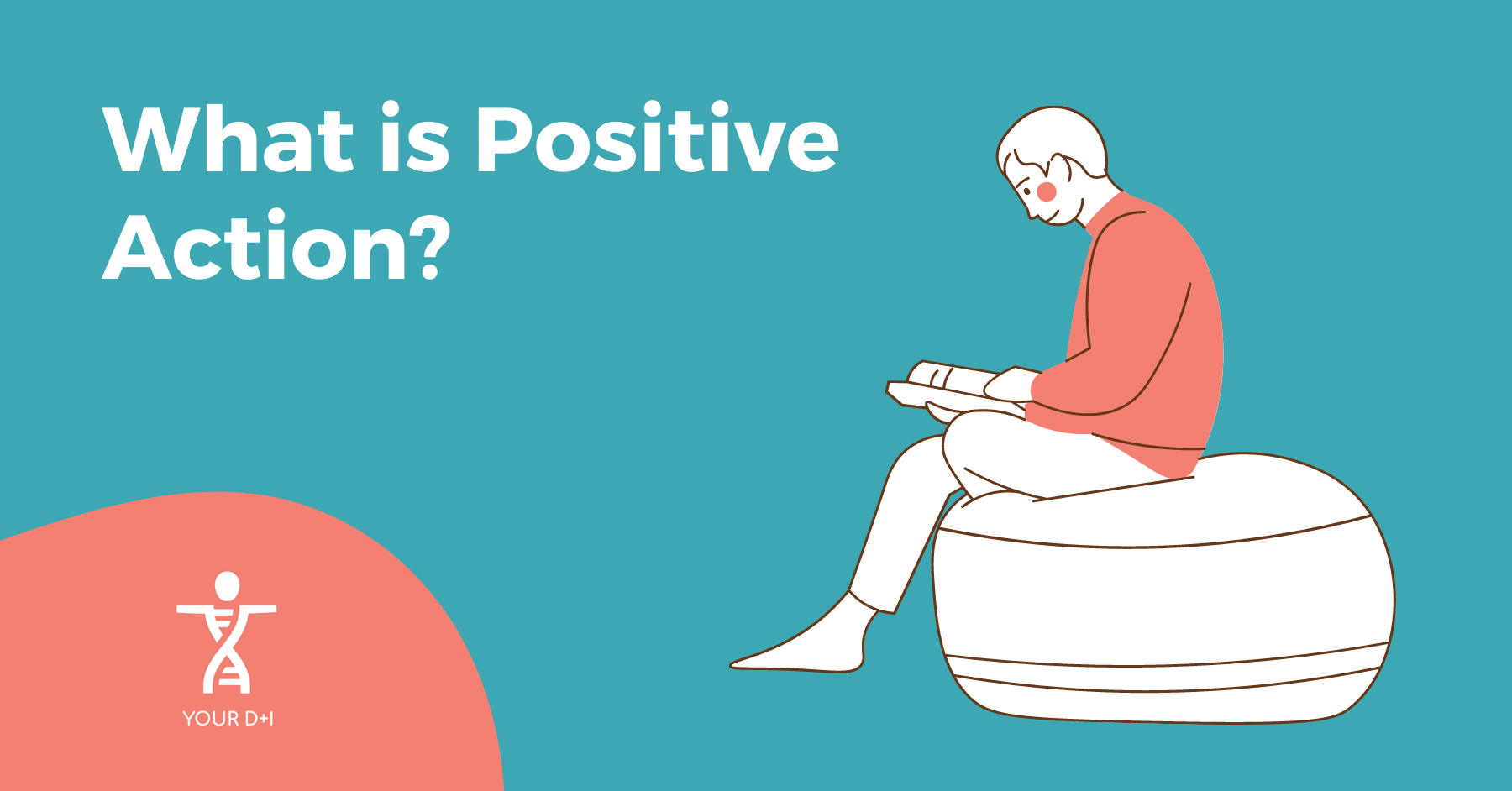What Is Positive Action?
An area of confusion for many businesses starting their Diversity + Inclusion journey is Positive Action. So what is it? Not to be confused with Positive Discrimination, which is unlawful, Positive Action is a measure that enables or encourages members of protected groups to overcome disadvantage.
This blog post will explore the differences between Positive Action and Positive Discrimination. And we’ll also be discussing the ways the former can help your business improve its Diversity + Inclusion. However, as both Positive Action and Positive Discrimination concern protected groups, let’s start by defining this term.
What are protected groups?
The term protected groups refers to groups of people who have a certain protected characteristic. For example, a protected group could be Black men or transgender people. Both of these groups have a protected characteristic.
Protected characteristics are traits that it is unlawful to discriminate against. According to the Equality Act 2010, the nine protected characteristics are age, disability, gender reassignment, marriage and civil partnership, pregnancy and maternity, race, religion or belief, sex, and sexual orientation.
The protected groups we will be referring to in this blog are people with a protected characteristic. Now, let’s get onto the terms Positive Action and Positive Discrimination and the difference between them.
What is Positive Discrimination?
Simply put, Positive Discrimination is when a business hires people simply because they are from a protected group. The motivation behind this is usually to increase their number of employees in the minority group. As we already mentioned, this is unlawful. You cannot choose to hire someone because they have a protected characteristic, just like you cannot choose not to hire someone because they have a protected characteristic.
Employers engaging in Positive Discrimination make hires based on the fact that a candidate has a protected characteristic. Take, for example, a hiring manager who is choosing between two candidates. One candidate is more suited to the job, and one is part of a minority. If the manager chooses the latter candidate, they are likely practicing Positive Discrimination.
Positive Discrimination can result in ‘diversity hires’, but this is not the only way it displays itself. Other examples of Positive Discrimination include setting benchmarks for hiring or promoting a certain number of employees from a protected group.
What is Positive Action?
In 2011, Positive Action became a legal way to encourage and support underrepresented minorities in work. Unlike Positive Discrimination, Positive Action encourages the recruitment and promotion of those from protected groups without giving unfair advantage. There are multiple ways businesses can implement this action to ensure everything remains fair.
One example of this is what is sometimes referred to as Positive Action schemes. This is when a business gains evidence that a certain group is underrepresented in the workforce and builds a hiring scheme to reduce this imbalance. This way, they can create roles specifically for this underrepresented group and ask for this type of applicant.
Remember the situation where someone must choose between hiring a more qualified candidate or one with a protected characteristic? It is unlawful to hire the candidate with a protected characteristic if the other is more qualified. However, you may choose to hire the diverse candidate because of their protected characteristic if they are equally qualified. Similarly, if two equally qualified employees are up for promotion, you can choose the person with a protected characteristic.
With evidence that a certain group is underrepresented, a business can also provide resources and opportunities for these groups. This could include providing training, mentoring, event attendance, and more for underrepresented employees. However, before you engage in Positive Action, there are a few things you should consider first.
How can you prepare for Positive Action?
Before you go ahead with a Positive Action scheme or initiative, you should first make some preparations. Even when avoiding Positive Discrimination, it can be useful to check your plans do adhere to the law. So consider the option of consulting an employment lawyer to double check.
Another consideration you should make prior to implementing Positive Action is the reality for your diverse hires or promoted employee. It is important to question what your new hires might experience in your workplace. Will they receive equal pay to others doing the same job? Will they be given the support they may need due to their protected characteristic? If they are disabled, will they be offered reasonable adjustments?
Similarly, you should think about the experience of somebody with a protected characteristic being given a promotion. Will they be given the responsibilities to match their title? Will they be listened to in meetings and given opportunities to affect decision making?
For both new hires and promoted staff, the onboarding process is incredibly important. If your current processes are not inclusive, review and improve them before you carry out a Positive Action scheme. This will ensure that employees from protected groups are made to feel welcome instead of ostracised. It will also improve retention, which can be lower when businesses first begin hiring protected groups.
What will you do?
Hopefully, this blog post given you some clarity on Positive Action and how it differs from Positive Discrimination. If you know that your workforce is lacking diversity, Positive Action is a great way to fairly hire and promote protected groups. However, you must also consider inclusivity to ensure that retention is strong and employers feel like part of the team.
Carefully consider the many different ways that your business could perform Positive Action, and do not forget to prepare. If you want to learn more about Positive Action or improving your business’s Diversity + Inclusion in general, don’t be afraid to get in touch!


